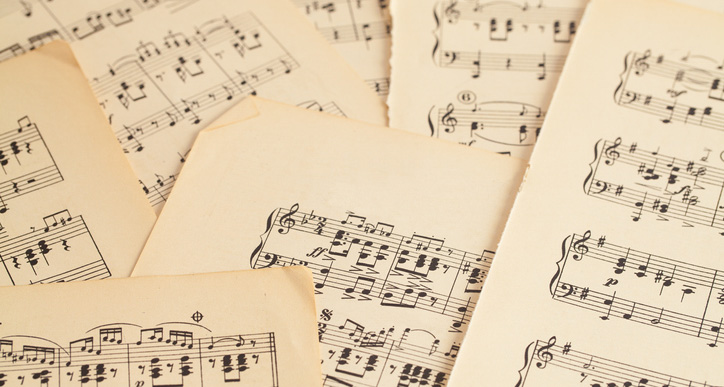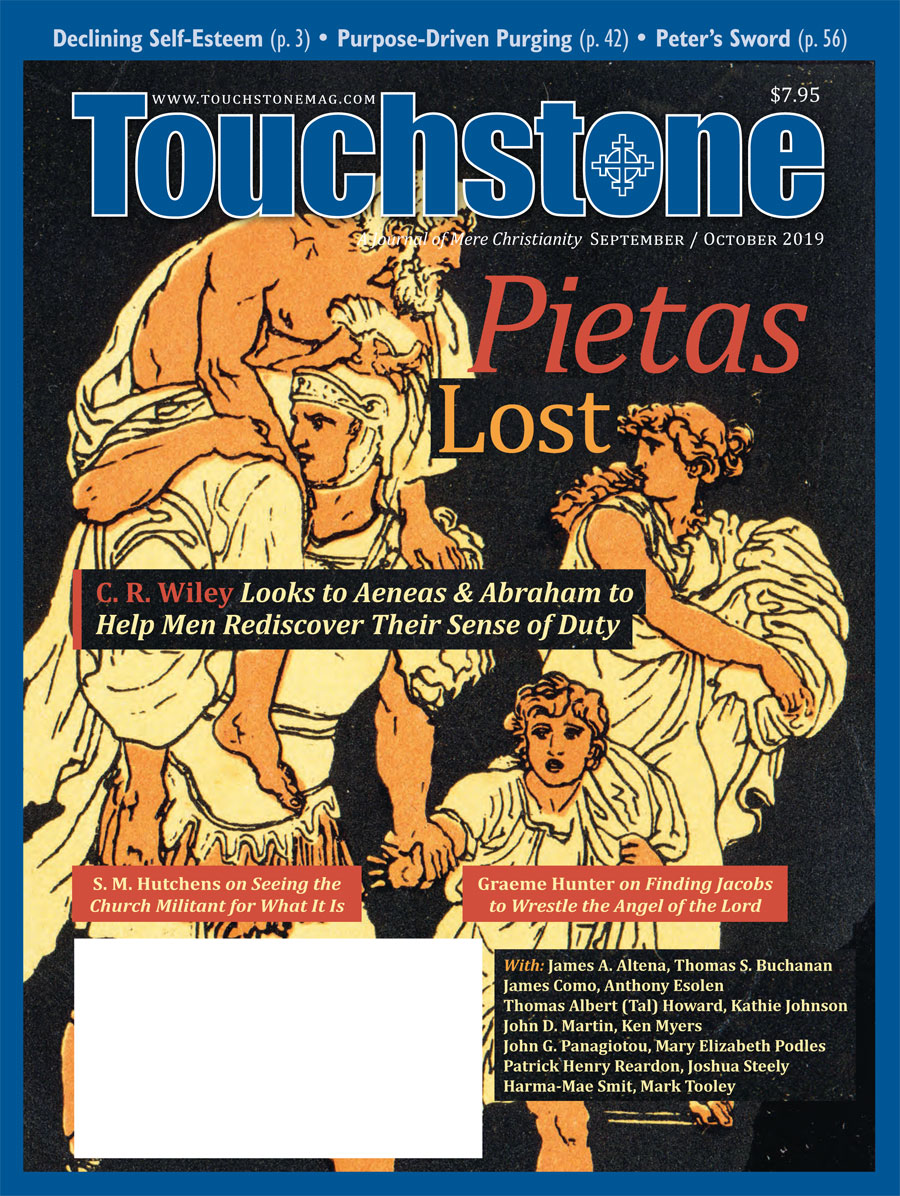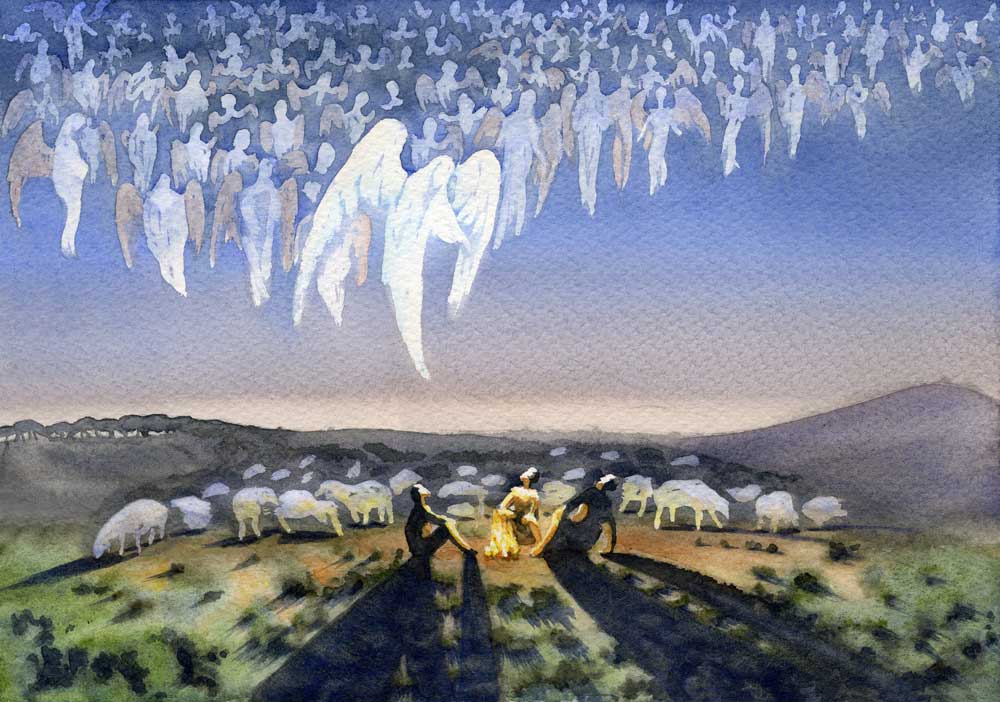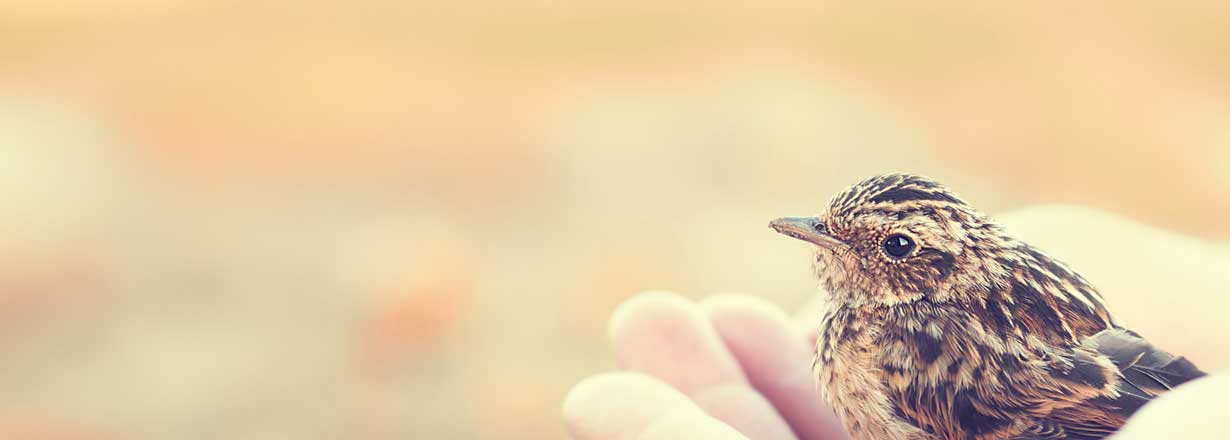First Books
Enhancing Music Appreciation
by Kathie Johnson
One of the blessings of living where I do is that we have a fine classical radio station, KDFC (you can stream it anywhere). In addition to great programming and wonderful informative tidbits, it has no ads, so it's almost always playing at our house.
There are periods during the day when people can make requests. I am particularly pleased when, as often happens, a parent asks to have a special piece of music played for a child. It is typical in these cases that the child plays an instrument and/or that the child and parent are listening together in the car or at home.
Most young people these days are surrounded by popular music of all sorts—in stores, on their electronic devices, often even at church. It is easy for them to understand the "language" of such music. These children sometimes struggle to understand and appreciate classical music.
Although I grew up listening to classical music and reading the notes at concerts, I didn't really learn as much as I wish I had. After 70 years of listening, I am still surprised by how much I do not know.
There are many books that can be used to help children enjoy and understand music, and even those children brought up on classical music can benefit from them. Here are a few to get you started.
General Books
First to consider are the general books on music. I like Aliki's Ah, Music! It is not long—about fifty pages, but it contains a wealth of information and is full of buoyant pictures. It tells what music is, what its benefits are, and what are some of its many varieties. It also gives a description of the major musical instruments and a brief overview of music history.
You might also like Genevieve Helsby's My First Classical Music Book, which includes a CD. It begins by talking about how music is used in settings that most children are familiar with—in movies, to dance to, at weddings, and so forth. Then comes a series of short biographies of the major composers, followed by a description of the families of instruments. Illustrated with animal characters, it is winsome.
Another book, M Is for Melody by Kathy-jo Wargin, is a volume in an alphabet series. Each page covers a topic beginning with a letter of the alphabet—for example, "B is for brass," "C is for conductor," "H is for harmony," "Q is for quartet," and so on—first giving a brief explanation of the subject in a rhyming verse and following that up with a longer prose explanation for the more interested reader.
Books About Composers
In addition to teaching more about music, books about composers give kids exposure to different periods in history and to different countries and cultures. Among the numerous books on composers, there are two good group biographies. One is Piero Ventura's Great Composers. This book begins by talking about ancient music, including early Chinese and Egyptian. Then come biographies of more than 60 composers, in chronological order, ranging from Monteverdi to Bach to Liszt to Stravinsky to the Beatles. Each biography is a page or two long and contains colorful illustrations. The second book, from a well-loved series by Kathleen Krull, is titled Lives of the Musicians: Good Times, Bad Times (and What the Neighbors Thought). Each composer has four pages, with one being a picture. There are engrossing stories and personal information about Vivaldi, Chopin, Satie, Gershwin, and fifteen others.
There are also several series of books on individual composers. Ann Rachlin's Famous Children series includes volumes on Mozart, Handel, Schumann, and other composers (as well as some artists). Each book is about twenty pages long, with some pages being all pictures, and each gives a glimpse into the childhood of the composer. The last page lists the composer's principal accomplishments.
Another series by Carol Greene, called Rookie Biographies, contains some volumes on composers, including Bach, Mozart, and John Philip Sousa. Each book is about 45 pages long, lavishly illustrated (including both art and photographs), and easy to read, with not many words on each page.
Mike Venezia (who also did a series on artists) has done a series called Getting to Know the World's Greatest Composers. These books are each about 35 pages long, with lots of illustrations, including the author's own cartoons. They have large print, yet include lots of information. The series contains books on Beethoven, Brahms, Tchaikovsky, Duke Ellington, and Leonard Bernstein, among others.
More Detailed Biographies
The child who gets really interested in a composer (or who wants more information for a report) may appreciate the books by Opal Wheeler, which tend to run about 150 pages each. Spacious print on each page makes them easy to read. I haven't read through these myself, but homeschoolers who use my library are always delighted to find them. Some of the titles in this series are Mozart, the Wonder Boy; Paganini, Master of Strings; and Franz Schubert and His Merry Friends.
There are so many other single books about composers that I can only mention a few here. Handel and the Famous Sword Swallower of Halle, by Bryne Stevens, is a fascinating, nicely illustrated story about Handel's childhood. Handel's father hated music, so his aunt hid a clavichord upstairs for him to play. When his father becomes famous for removing a knife accidentally swallowed by a local boy, Handel's life is changed.
Davis Lasker's The Boy Who Loved Music is full of pictorial and written detail about a particular time and place—the court of the noble Esterházy family of Hungary in the 1700s, where Franz Josef Haydn conducted the prince's orchestra. On one occasion, Haydn's musicians have been kept away from their families for too long. Finally, after more delays, he writes the Farewell Symphony, during the performance of which the musicians disappear one by one, sending a clear message.
Catherine Brighton's Mozart is subtitled Scenes from the Childhood of the Great Composer, and that is just what it is. On each spread, there is a detailed picture on one side and the story of a particular incident in Mozart's early life, as told by his sister, on the other. Among the incidents related are "Salzburg," "Papa's Plan," "The Journey Starts," "Paris," and others.
Finally, I want to mention an audio series first released on audiocassette and then on CD—the Classical Kids series, which features engaging stories and music. At least two of the recordings have been made into books: Beethoven Lives Upstairs, by Barbara Nichol, and Tchaikovsky Discovers America, by Esther Kalman. These books are great for kids who've been hooked by the CDs.
At a later time, I'll discuss books about musical instruments, as well as some fictional books about music.
Kathie Johnson has always had a love for children's books. She collected many as a teacher and began sharing them with other teachers. In 1986, she opened a children's library in her home, and it has continued to expand over the years. Many home-schooled and schooled children borrow books from it, and she takes great pleasure in finding the "right" book for a child. She attends First Presbyterian Church in Berkeley.
bulk subscriptions
Order Touchstone subscriptions in bulk and save $10 per sub! Each subscription includes 6 issues of Touchstone plus full online access to touchstonemag.com—including archives, videos, and pdf downloads of recent issues for only $29.95 each! Great for churches or study groups.
Transactions will be processed on a secure server.
more from the online archives
calling all readers
Please Donate
"There are magazines worth reading but few worth saving . . . Touchstone is just such a magazine."
—Alice von Hildebrand
"Here we do not concede one square millimeter of territory to falsehood, folly, contemporary sentimentality, or fashion. We speak the truth, and let God be our judge. . . . Touchstone is the one committedly Christian conservative journal."
—Anthony Esolen, Touchstone senior editor











